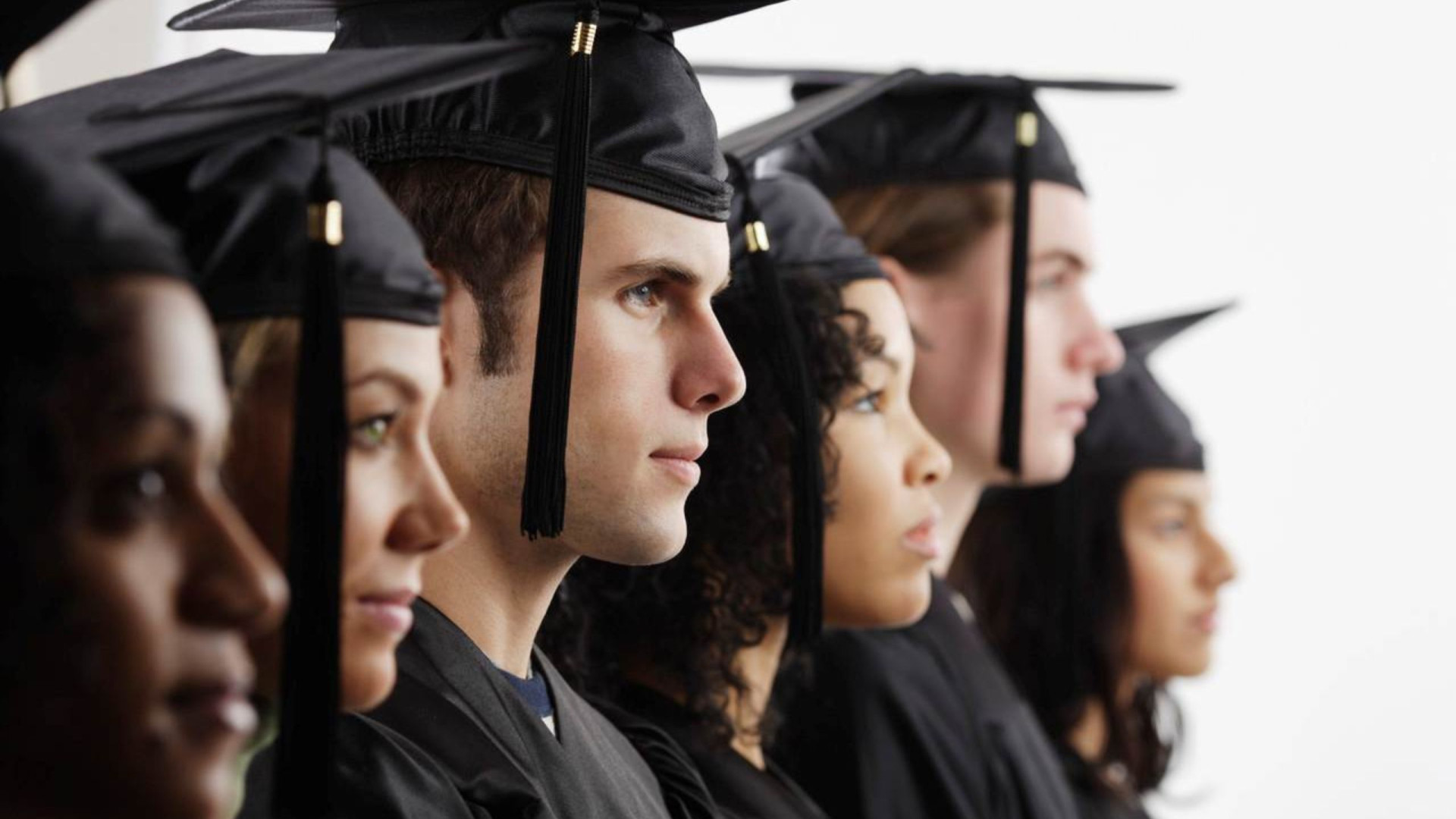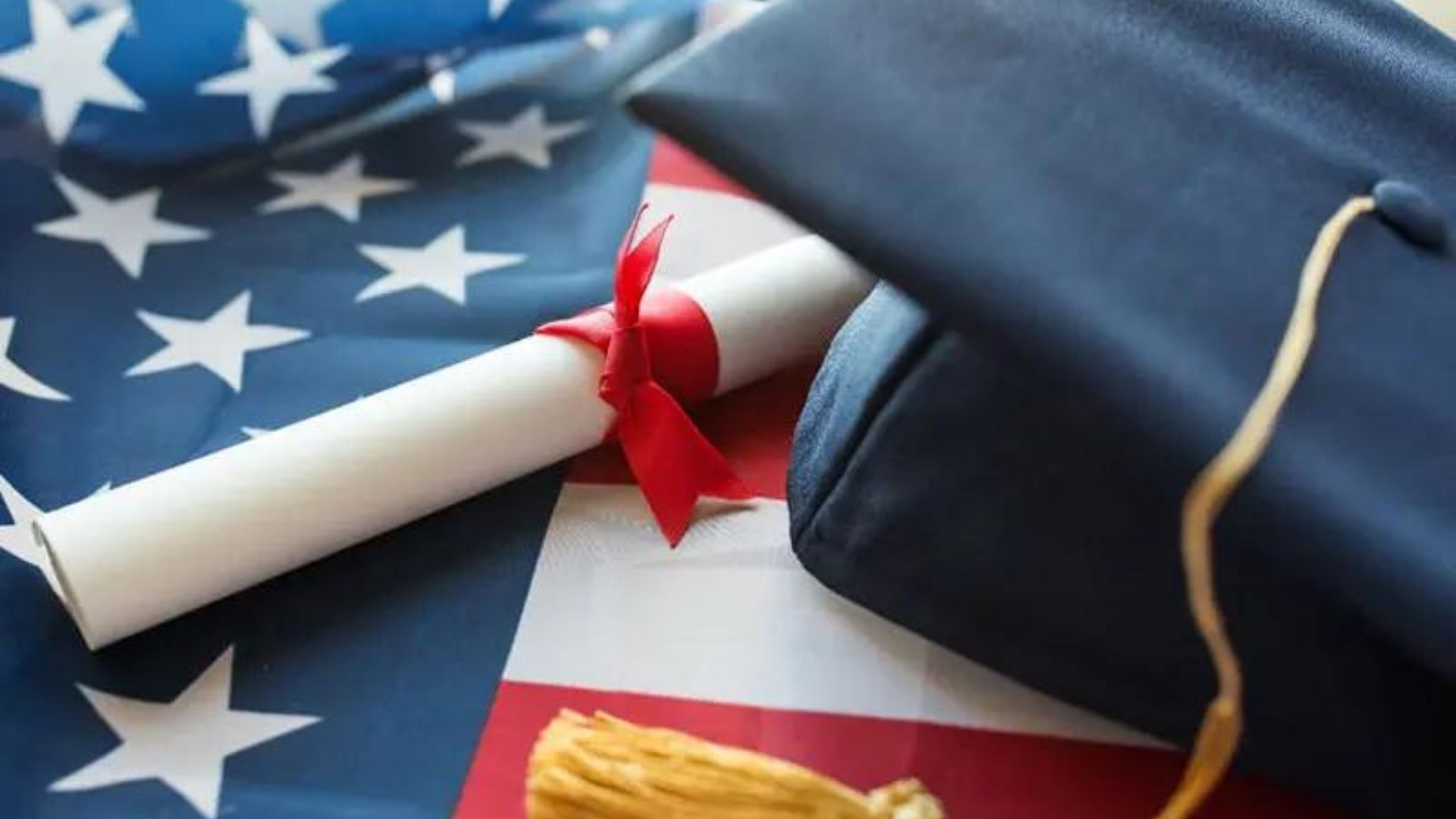Updated on 15.04.2024
Despite their great importance for the American economy, more F-1 visas were rejected than ever before. We provide information about the background.
Share article:

With the F-1 visa "Student in an Academic or Language Training Program" foreign nationals may attend an accredited university, business school or college, as well as a seminary, conservatory, academic high school or other academic institution in the United States (e.g., for full-time study, semester, language training, etc.).
The student visa is a nonimmigrant visa for the USA, which is used by a large number of international students every year.
It is not uncommon for highly qualified individuals who originally came to the US on an F-1 student visa to begin an Optional Practical Training (OPT), i.e. an internship in the USA, and then find a well-paid job. F-1 students who have earned a degree in science, technology, engineering or mathematics, STEM for short, are particularly sought after on the US labor market.
Despite the economic importance of graduates with F-1 visas, the US State Department rejected more F-1 applications in 2023 than ever before.
In 2023, the U.S. Department of State denied over a quarter of a million applications for F-1 visas worldwide, more precisely 253,355 denials out of 445,418 F-1 visas issued. That is a remarkable 36% of all F-1 visa applications, while other nonimmigrant categories were only rejected in 18% of cases on average in the same year.
In previous years, the refusal rate for student visas was in a similar range to other nonimmigrant visas for the USA. But since 2021, the F-1 denial rate has been almost double that of all other nonimmigrant visa categories.
It appears that the higher rejection rates have deterred foreign students from applying. Since 2016, the total number of F-1 applicants has fallen, although the number of student visas issued has risen steadily since a record low during the pandemic.
According to David J. Bier, Director of Immigration Studies at the Cato Institute, this has a significant economic impact. He estimates that each person studying in the US with an F-1 spends an average of about $30,000 per year on tuition and living expenses. With around 250,000 international students, this results in total expenditure of around 7.6 billion dollars per year. A substantial economic benefit for the United States.
The U.S. State Department has not explained the reasons for the high number of rejected student visas, but almost all rejections are based on the lack of proof of nonimmigrant intent. This means that applicants cannot prove that they have no intention of abandoning the residence in their home country after their studies in the United States and do not intend to live permanently in the United States. US visa applicants must demonstrate sufficient ties to their home country that would cause them to return to their home country when the reasons for their visit have ended.
For students who wish to stay in the USA for a longer period of time but do not have the economic and social ties, it is sometimes difficult to prove that they do not intend to immigrate. This fact is explicitly pointed out in the Foreign Affairs Manual (9 FAM 402.5-5(E)(1) (U) Residence Abroad Required) and yet US consular officers often assume that F-1 applicants intend to immigrate th the United States.

NAFSA, the association for international educators, which was founded in 1947 as the National Association of Foreign Student Advisers, spoke out in favor of the introduction of dual intent for F-1 visa applicants (similar to the H-1B visa). This would give international students the opportunity to officially express their interest in a permanent move, i.e. immigration to the US, after their studies without affecting their prospects of obtaining a (nonimmigrant) visa. At the same time, the requirement to provide evidence of close, firm ties to the home country could be waived.
It can be assumed that the rejected applicants have already been accepted at a state-recognized or SEVP-certified educational institution in the USA (for the purpose of issuing the I-20 form) and "only" failed due to the lack of visa requirements.
The U.S. Department of State has not published the refusal rate by nationality for the years 2022 and 2023. Nevertheless, an important trend in US visa policy for students is apparent: While the number of Chinese F-1 students initially increased, it has drastically decreased since 2015. At the same time, the number of Indian F-1 visa applicants has suddenly increased.
After significant delays during the pandemic, Indian US consulates issued a record 130,839 F-1 visas to the US in 2023. At the same time, the rejection rate for F-1 visa applications at Indian US consulates before the pandemic was far higher than that for applicants in China.
International students from India accounted for 29% of all visa issuances in 2023, so their higher rejection rate may have influenced the global average. Although this theory seems plausible, the following points should be noted:
The increase in visa refusals could therefore also be caused by China or other countries.
There are various reasons for the rejection of an F-1 visa for the USA, and occasionally even the smallest errors in the application process can lead to this. The exact causes for the drastic increase in the F-1 visa rejection rate since 2022 cannot be clearly determined.
Some requirements for F-1 applicants, such as proof of nonimmigrant intent, may be too strict. Normally, US consular officers are supposed to consider the applicant's current situation, but not possible changes in intent if legal residency opportunities arise in the US.
This problem could be solved, for example, by the concept of dual intent, which is being discussed by visa experts. Especially as it would be advantageous for the US government to keep well-trained, highly qualified specialists in the country.
The U.S. Department of State's (DOS) official guidance on F-1 visas, which has been set out in the Foreign Affairs Manual since September 2021, is a step in the right direction. However, the application of these guidelines in the various US consulates and US embassies around the world is inconsistent.
A more transparent policy of the US authorities regarding the rejection of F-1 visas and a more uniform approach to the review of F-1 applications could certainly be helpful.
If you commission us to process your F-1 visa application, we will check right at the start whether you meet all the entry requirements. These include, among other things, demonstrable firm ties to your home country.
During the application process, we support you in compiling the required application documents, check them for accuracy and completeness, process the DS-160 application form and ensure that your visa application goes as smoothly as possible.
Date:
Wir und unsere Partner nutzen Cookies, um personenbezogene Daten wie z.B. Browsing-Daten zu speichern und abzurufen, um z.B. Inhalte und Werbung bereitzustellen und zu personalisieren sowie die Verwendung der Website zu analysieren und das Benutzererlebnis zu verbessern. Sie erfahren mehr über die Zwecke, für welche wir und unsere Partner Cookies einsetzen, wenn Sie unten auf den Button „Cookie Einstellungen“ klicken. Hier können sämtliche Einstellungen auch geändert werden. Nachträglich kann man jederzeit seine Cookie-Auswahl überdenken oder seine Einwilligung widerrufen, indem man auf den Link zu den Cookie-Einstellungen im Footer unserer Webseite klickt. Beachten Sie bitte, dass das Blockieren einiger Cookie-Typen unsere Möglichkeiten zur Bereitstellung von auf Ihre Interessen zugeschnittenen Inhalten haben kann oder einige Funktionen der Webseite nur eingeschränkt zur Verfügung stehen.
Durch klicken auf “Alle Cookies akzeptieren” stimmen Sie unserer Nutzung und der Weitergabe Ihrer Daten an unsere Partner zu.